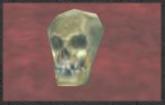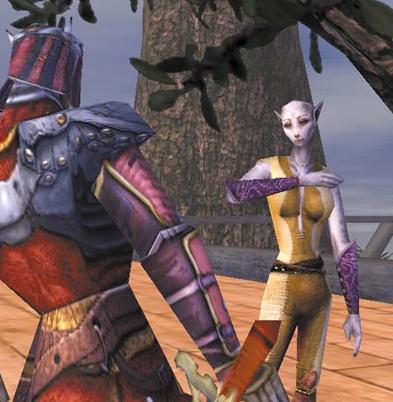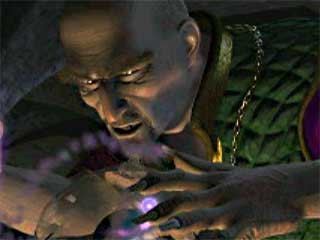Sirideain’s Ancient History
Return to: Lore and History
Sirideain’s Ancient History to the Shattering of the Gem
| The circumstances at the utmost beginning of the world are wholly unknown to us. It may be that great civilizations rose and died leaving no trace we can tell, or that Sosaria was simply barren for eons. Whichever be the case, it eventually came to pass that two intelligent species dwelled in Sosaria: the Juka and the Meer. Known only recently to us, the Juka are a war-like reptilian race with a highly developed code of honor, while the Meer are feline, strongly gifted in magic, and have values centered upon reverence of ancestors. For millennia, they played out a war in ancient landscapes, yet never shifting the balance of power between them. Humans and gargoyles also existed in this world, but they were not of this world, having entered through moongates from places unknown. They were mere savages, though, and played no important role in history. |
 |
Whether early or late in the reign of the Meer I cannot tell, but they did come into contact with creatures long known in Britannia: the wisps. The wisps are actually more properly called Xorinia, for it is in actuality but a single intelligence with many manifestations spanning countless worlds. In fact they seem not wholly convinced by the concept of individuality, and have been known to assume all the individuals contacting them from any given dimension as parts of a vast entity like themselves. There is much more to tell about wisps, but at this point what is important is that the wisps provided to a Meer named Zog the spell known as Armageddon. Zog subsequently employed this spell, eradicating all life from Sosaria. It was not the wisps’ intent to end all life – the spell was merely offered as an example of the extent of the wisps’ knowledge. “Misuse of the sample information is suspected,” according to the wisps. |
| Only wisps know how many lonely eons passed until life rose anew. It is said that the first new life in Sosaria was a great Yew tree, though one can only imagine how this could be known. Humans once again encountered the moongates that brought them to Sosaria. Rising out of some dark and primitive past these humans began to form tribes, and then kingdoms. At this time there were also other races: elves, dwarves, and bobbits, but their numbers were small. The gargoyles also returned, but lived underground, largely unknown to humans. Eventually one kingdom rose in might above all the others and became an empire. This was the Esidin Empire. Esidin’s power began by its will and martial prowess, but its greatest achievement and its sustainer was the Ancient Liturgy of Truth. This tradition was both a system of philosophy and of magical power that became the cornerstone of Esidin culture. The symbol of these beliefs was the ankh, and the Esidin built many shrines to Truth. The sum total of magical knowledge available today pales in comparison to what was known to the Esidin, but their knowledge was not perfect. Many magical creatures, including gazers, headless, reapers, corpsers, and harpies, are believed to be unintended consequences of their ancient spells. |
 |
 |
The continent of Ambrosia was at one time during the reign of the Esidin assaulted by meteorites and earthquakes to such an extent that it disappeared beneath rock and ocean. Yet, miraculously, some part of Ambrosia remained intact as a vast cavern beneath the earth. The Esidin took it upon themselves to craft magic to light the subterranean continent and to provide transportation to it, and so Ambrosia was repopulated. However, the means of transport were lost to the kingdoms of later centuries. In its long isolation, Ambrosia gave rise to Terathans and Ophidians. The secret of these races’ origin is known only to the Ophidian matriarch and her successor, and the two races war incessantly upon one another on account of this secret.
The reasons are not known in full, but over time the empire fractured and collapsed from within. More than one city of the Esidin simply vanished all at once leaving no trace. Among these the city of Wind. In various parts of the world, new feudal kingdoms rose to fill the vacuum of the empire. The shrines and moongates that the Esidin built remained fixtures of the landscape, but few reflected on the fate of their builders. Soon the Esidin were barely a rumor; however, the Liturgy of Truth was not abandoned, but rather sustained by dedicated believers who founded the city of Moon. During this time, some dissented from the Liturgy of Truth, believing that true enlightenment does not consist only of abstract ideas, but also in concern for fellow beings. This group became the Brotherhood of the Rose, and they settled in Yew. |
| The time of the rising of the new kingdoms leaves the first definite maps of the physical geography of Sosaria. The continents were entirely unlike those existing today. The main continents were these: Akalabeth, the Land of the Feudal Lords, the Land of Danger and Despair, and the Continent of the Dark Unknown (and Ambrosia.) On Akalabeth were founded these cities: Akalabeth (which became Britain), Moon, Montor, Paws, Fawn, Tune, Grey, and Yew. The other kingdoms were Olympus in the Continent of the Dark Unknown, the White Dragon Kingdom in the Land of Danger and Despair, and the kingdoms of Randorin and Barataria in the Land of the Feudal Lords.In the time of the new kingdoms, a particular phenomenon occurred, which was the appearance of unusual moongates from entirely different worlds. Through these moongates came a number of unique individuals. Through both their qualities of character and enduring lifespans (through differences in the passage of time between Sosaria and their homes) these people grew to positions of great prominence. They include, at the least, Lord British, Lord Blackthorn, their jesters Chuckles and Heckles, Iolo, Gwenno, Shamino, and Dupre. When Lord British arrived in Sosaria, he found himself in Akalabeth, ruled by King Wolfgang. Wolfgang’s second son had an evil heart and was called Mondain. Mondain slew his father and stole the inheritance intended for Wolfgang’s first son: the Sun Ruby. Through dark arts, Mondain transformed the Sun Ruby into the Gem of Immortality. Aided by the gem, Mondain gathered armies of creatures created or summoned by magic to plague Akalabeth. The monsters created by Mondain included the lizardmen and ratmen, while his apprentice Minax created orcs, trolls, ettins, and ogres. For driving Mondain and his hordes from Akalabeth, Lord British was hailed as the proper ruler of Akalabeth, which became known as Britain; however, his strength was not enough to destroy Mondain. As Mondain’s understanding of the Gem grew, he became well nigh invincible. Seeing that hope was nearly lost, Lord British employed his silver serpent medallion to summon a new champion. |
 |
 |
The hero who answered this call is known to us only as “The Stranger.” The Stranger was a mighty warrior and a spellcaster, but even he could do no harm against the power of Mondain, since Mondain had reached full mastery of the Gem. Yet, the Stranger prevailed by travelling backwards in time, and putting an end to Mondain by shattering the Gem just as Mondain was realizing its power. As his life was bound with the Gem, Mondain died immediately upon its shattering.At the death of Mondain, the future that had seen his rule disappeared, utterly, and a new future began its story. Yet, this story plays itself out not in the Stranger’s Sosaria (of which we know but little) but inside each fragment of the shattered Gem of Immortality. In fact, in every facet of every shard there exists another Sosaria. Many are similar, but no two identical. Some are even so similar that the same individuals live in them and perform the same deeds. |
Sirideain
2002
Last modified: September 11, 2011